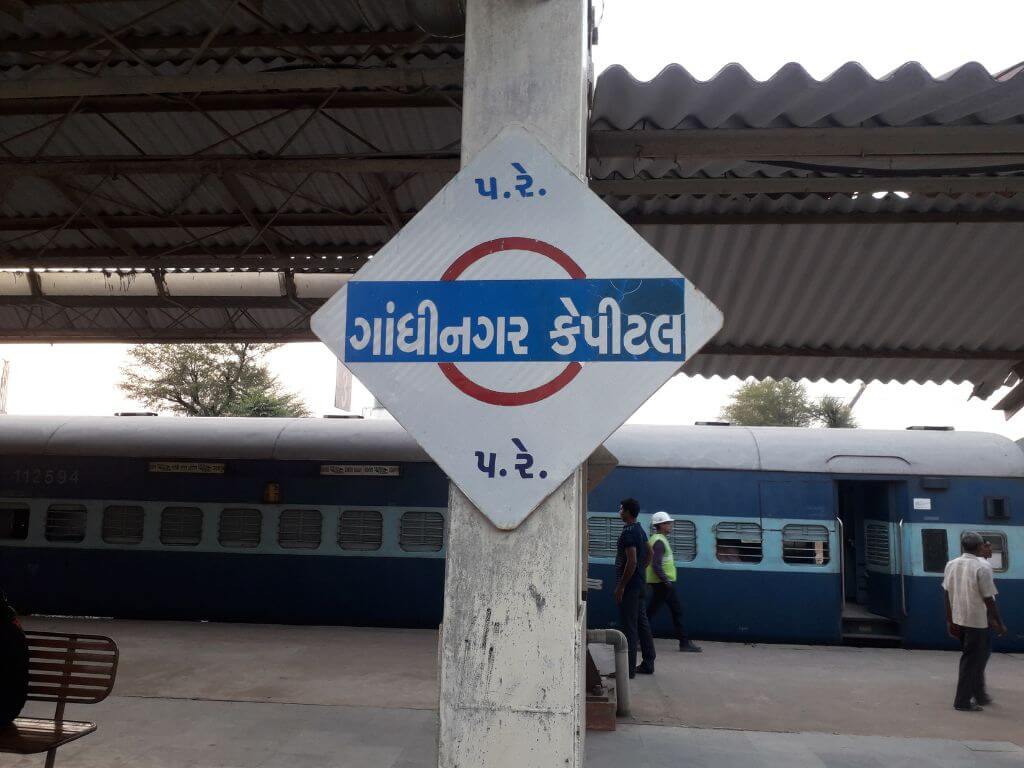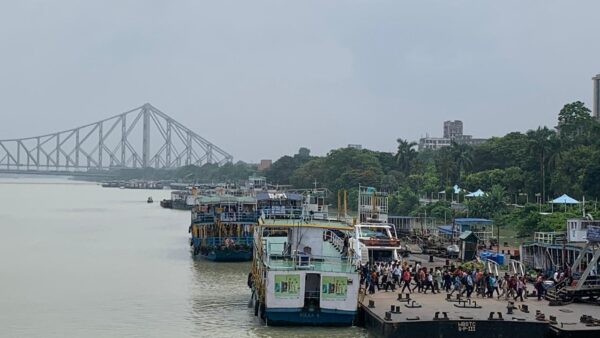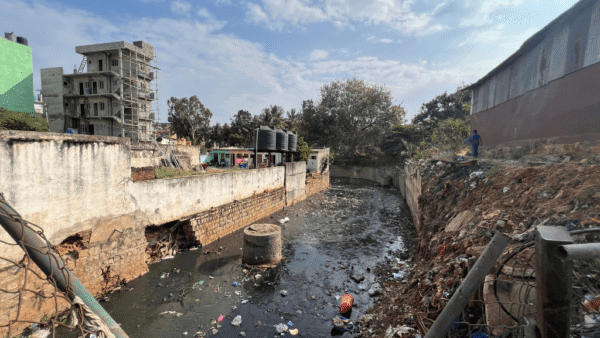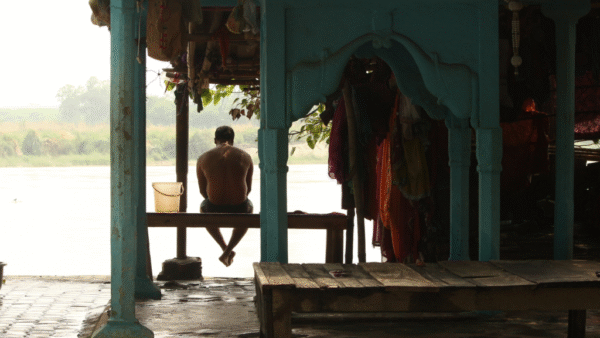Well into its 63rd year of conceptualisation, Gandhinagar which was planned and built on a greenfield site north of Ahmedabad as the capital city of the then newly-carved out Gujarat state has an identity crisis. The question about this third Indian city to be planned and built in the post-independence years, after Chandigarh and Bhubaneswar, is simply this: Will it retain its identity or become another suburb of Ahmedabad?
When it was formed in 1960 by separating districts from the erstwhile Bombay Presidency, Gujarat needed to have a showpiece capital after its attempts to get Bombay failed. Ahmedabad was a crowded and bustling commercial hub. Gujarat chose to seed its new capital city in the image of its most prodigious son, Mahatma Gandhi.
When cities are birthed – planned from scratch and built with political purpose – they are laden with promise and grow with aspirations. They carry hope, motives, and work as platforms for dreams that people and governments bring to them. A few cities rise above their brick-and-mortar structures to symbolise something larger; others remain at the basic level never really acquiring an identity of their own. Gandhinagar, perhaps, falls somewhere in between.
Given that it was newly created, it cannot flaunt heritage and history as Ahmedabad can or Mumbai as a state capital can. There is little to conserve. Like Chandigarh, Gandhinagar too was planned and built as a political-administrative capital but without as many flourishes of Modernism. So, it carries a functional look with straight lines, unornamented facades, and wide tree-lined roads along neatly laid-out sectors.
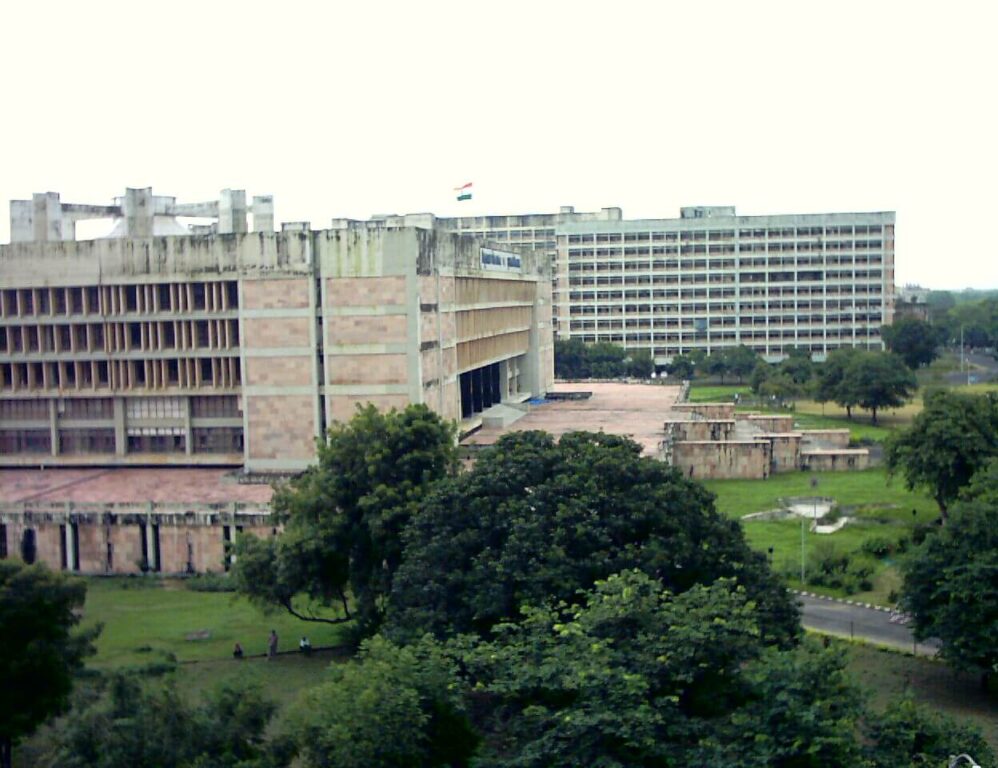
Photo: Creative Commons
In its initial days, as the government of Gujarat moved in, employees and even journalists resisted going 26-30 kilometres away from Ahmedabad. Stories abound of how the government would arrange for buses to ferry people and how it allotted plots or bungalows to accredited journalist-representatives. The Ahmedabad-Gandhinagar corridor now has better infrastructure and more people can afford cars. The commuter traffic remains heavy and the fortunate have homes in both cities. There is a torrential rush to buy in Gandhinagar but land is scarce, so the prices are steep and come with conditions attached.
A fair share of the original 30 sectors was apportioned to the Raj Bhavan, government offices, ministerial enclaves and so on. Then came the residential quarters of serving government officers and staff, and thereafter subsided plots and easy loans for officials who built houses back then. Some of these are up for sale but at exorbitant prices; also, part of the sale proceeds has to be deposited with the government. This is the old tranquil Gandhinagar. When peripheral areas were de-reserved for the private sector, multi-storey residential and business establishments came up, encircling this city.
The backstory
The idea of Gandhinagar, according to published accounts, had been floated before Gujarat was formally inaugurated on May 1, 1960. Dr Jivraj Mehta, chief minister-designate had announced nearly two months earlier that the capital of Gujarat would be the newly created city of Gandhinagar named after the Mahatma. The site selected was no more than a cluster of some dozen dusty villages, north of Ahmedabad on the banks of Sabarmati River.
Gandhinagar was furthering an experiment in independent India’s urbanisation trajectory which began with the famed Le Corbusier planning Chandigarh and Otto Koenigsberger drawing up Bhubaneswar. But Gandhinagar had neither the political symbolism of Chandigarh nor the blend of modern and traditional of Bhubaneswar. It emerged as an alternative in the political struggle between the princely Baroda and industrial Ahmedabad to be anointed as the capital city. The preliminary report, in 1961, noted that “various alternative sites near Baroda and Ahmedabad were considered, a rapid reconnaissance was carried out, and the advantages and disadvantages of these sites was carefully examined”. However, both the cities were overlooked in favour of the greenfield site.
The first stone was laid on August 2, 1965. Planned and implemented by HK Mewada and Prakash M Apte over the next five years with support from a helpful group of architects, planners and industrialists, Gandhinagar was visualised as a verdant green city. It was designed to mirror the best of Gujarat’s rich heritage by merging traditional town planning with a modern outlook, yet reflecting the principles of the Mahatma whose historic Sabarmati Ashram stood south of the planned capital.
For nearly four-five years after the formation of Gujarat, there was hardly any movement on the making of Gandhinagar. It took an editorial in Ahmedabad-based newspaper, Prabhat, on June 24, 1964, pointing out that “a backward country like Morocco had shown more efficiency and planning in developing its capital at Agadir than the Gujarat government had” which stung the government into action. Officials were forced to admit that the master plan of Gandhinagar had not been finalised.
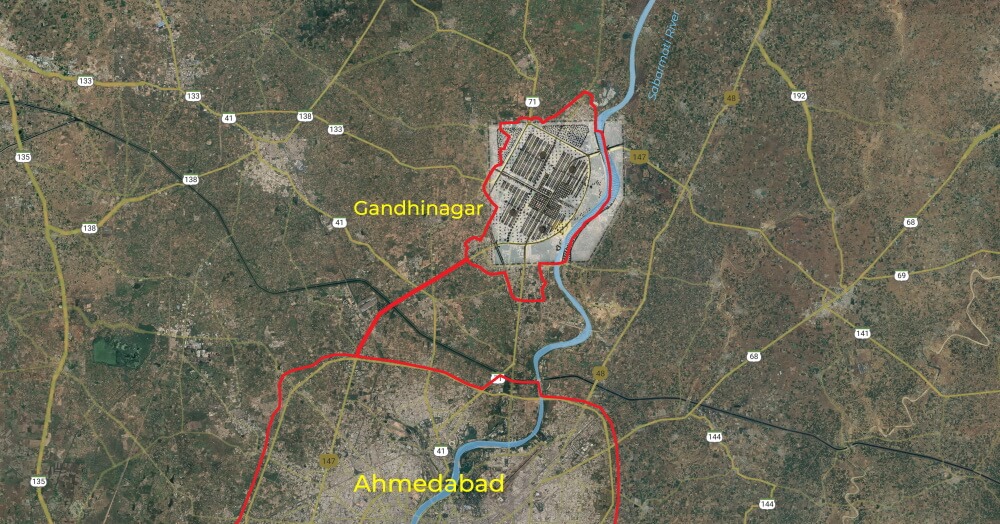
Modernism through Mewada
In January 1965, the Cornell-educated HK Mewada, who had worked in Chandigarh with Le Corbusier, was appointed the chief town planner and architectural advisor for the new capital city project. He was also made head of the newly created Town Planning and Architecture department. By April 1966, the master plan for Gandhinagar had been prepared and approved by the Gujarat government.
Mewada was influenced in no small measure by Le Corbusier but he was also influenced by Karl B Lohmann, Professor of Landscape Architecture and City Planning, at universities across the United States. Lohmann’s ideas were expressed by Mewada in planning Gandhinagar and the former wrote this: “Mewada has shown not only special talent for hard and creative work in research design and in other aspects of the planning field but he has also demonstrated an unusual capacity.”
Mewada was inducted into government service on a salary of Rs 3,000 a month. Being US trained with a year’s experience of working with Le Corbusier made him attractive. Like Chandigarh by his master, Mewada too imagined the greenfield city as a display of Modernism with touches of Gandhism.
The plan
Gandhinagar was divided into 30 sectors, each of one kilometre by one three-fourth kilometre size. The government buildings – Secretariat and the Legislature or Vidhan Sabha – was placed at the heart of the city in Sector 10. The majority of sectors were residential, and each was planned as a complete unit with all basic facilities such as schools, shopping, and gardens in its centre for easy accessibility. Roads were in a grid pattern and a hierarchy of roads connected individual sectors. Private housing had been provided along with government housing. Defence establishments were situated on the eastern bank of Sabarmati River.
As in Chandigarh, here too the urban growth around the capital was regulated by a Gujarat New Capital (Periphery) Control Act, 1960, which restricted the expansion around the Gandhinagar Notified Area (GNA). The Act was repealed in 2003, after the Bharatiya Janata Party came to power in the state in 2001, on the grounds that establishing the Gandhinagar Urban Development Authority (GUDA) in 1996 had made it redundant.
In its imagination and scope, Gandhinagar was a version of Chandigarh. And therein lies what possibly is its drawback. Coming to the drafting table more than a decade after Chandigarh had been built, the planners had the opportunity to fill in the lacunae in the Chandigarh approach and re-envision a new city with other – different or more local – influences. In this sense, perhaps Gandhinagar was an opportunity lost.
However, in later decades, the master plan itself has meant little as Gandhinagar outside the GNA has seen massive development with land transactions and large-scale construction with the involvement of the private sector, even as the planned capital city appears somewhat frozen in time. This raises questions about the viability of planning cities that outlive their scope in a few decades.
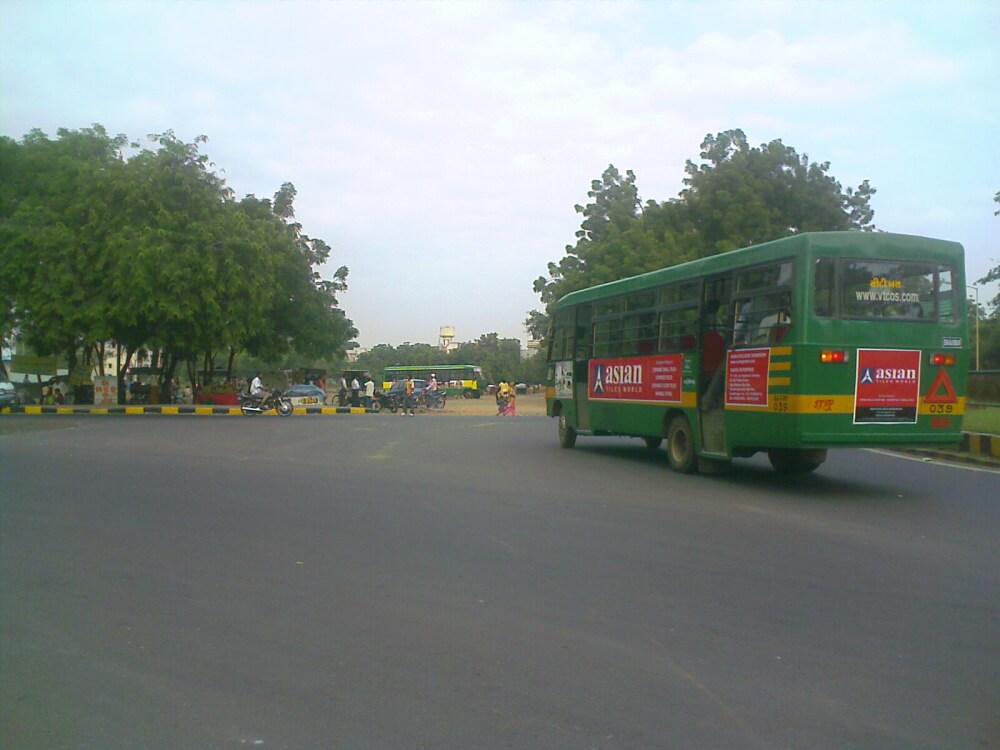
Photo: Creative Commons
A planner objects
Gandhinagar’s expansion in recent years made architect Apte, who had partnered Mewada, express his angst. In 2011, he wrote a well-travelled essay titled ‘Gandhinagar Endangered: A Capital’s Plan Dismantled’ which laid out a number of points. I understand that it was marked to then chief minister Narendra Modi, but if there was a reaction, it is not known.
Apte, in a forthright manner, had pointed out that by design or otherwise, the re-planning of Gandhinagar by consultants of the Gandhinagar Urban Development Authority (GUDA) had obliterated its identity as a capital city, weakened its consciously designed axial plan and egalitarian approach, and dismantled the Gandhian ethos. The juggernaut of unbridled capitalism, he added, had led to the debasement and inorganic extension of Gandhinagar, and it was becoming just another suburb of Ahmedabad. In about a decade after this critique, Gandhinagar is well on its way to be that suburb or a twin city.
Could this have been avoided? Apte’s contention was that the master plan had provided the basis to ensure that Gandhinagar retains its identity and does not become an extension of Ahmedabad. The growth of the city, according to him, was planned towards northwest, the Sabarmati being the border towards the east and the industrial area to the north. The original city was planned for a population of 1,50,000 but if the floor area ratio (FAR) was increased from 1 to 2, it could have easily accommodated twice that; additional sectors planned in the northwest could accommodate another 4,50,000 thus providing for nearly 7,50,000 population.
This planning has been turned around on its head as Gandhinagar was made to expand southwards, towards Ahmedabad. It became profitable for people to have properties in both cities. As private land developers inevitably became part of this expansion, the market value of land outside the planned Gandhinagar soared; the land market here is now the most profitable and attractive part – a far cry from the plan.
In this expansion, which came from political-private capital push, the original plan was neither reviewed for what it offered nor were the planners consulted, according to Apte. The southward expansion, driven purely by the profit motive and detrimental of the original urban design, would dent the identity of Gandhinagar, he feared.
Whither Gandhinagar
Even as the old Gandhinagar, built according to the plan, seems stuck in time – opening up a possible future market of redevelopment – the scope of the city has moved well beyond the plan. In fact, the Gujarat government is set to appoint a committee to make Ahmedabad and Gandhinagar into twin cities. The committee, from information sourced by this writer, will be responsible for synchronising development projects of the municipal corporations of Ahmedabad and Gandhinagar as well as villages and small towns under Ahmedabad and Gandhinagar urban development authorities (AUDA and GUDA); these two may also be merged.
The Metropolitan Area Planning Authority, first planned in 2009, is likely to be brought into existence too. Highly placed sources in the government are clear that considering the fast-paced growth of the two cities, “the state government (has) planned merger of the two urban development authorities”. The Periphery Act was repealed in 2003; this brought 68 villages of Kadi, Kalol, Daskroi and Sanand talukas into the Ahmedabad Urban Development Authority. Two decades after the repeal, the safeguarded green cover around Gandhinagar has virtually disappeared yielding a concrete jungle, making the old city an island surrounded by high-rises.
This expansion to the south, towards Ahmedabad, has ruined the original plan’s most important concept, the central vista, according to Apte and others. It was to be naturally extended to the southwest maintaining the axis as the city expanded. More than 6,000 acres of green cover to the southwest have been bought or taken by big land developers; similarly, seven gamthans (village settlements) abutting the city have been arbitrarily allowed private residential development; and a five-kilometre belt of land on both sides of the Koba-Gandhinagar expressway has been designated for commercial use with a FAR of 2. Together, these major design changes will impact Gandhinagar.
According to the Census of India and local records, the population within the Gandhinagar Municipal Corporation area grew by 6,791 people from 2001 to 2011 while the population outside it grew by 46,073 in the same decade. Repealing the Periphery Control Act had a major impact; additionally, the land use changes along the Gandhinagar-Ahmedabad corridor which increased commercial area from 0.66 per cent to 3.9 per cent also left its impact.
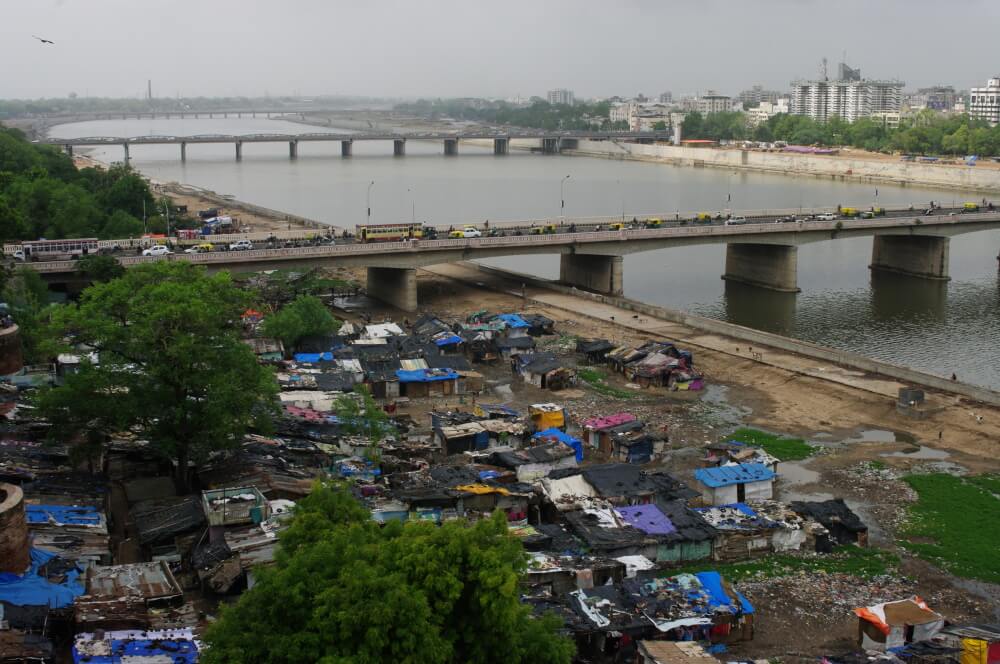
Photo: Creative Commons
Mega project changes city
The setting up of the Gujarat International Finance Tec (GIFT) City, a pet project of Prime Minister Narendra Modi, in the Gandhinagar-Ahmedabad corridor meant a boost to areas outside the originally planned Gandhinagar. The GIFT City with 886 acres worth Rs 78,000 crore (in 2015), billed as a better business hub than Mumbai, rivalling Dubai and Singapore, still remains a work in progress despite a massive push from the highest levels in the government.
The Prime Minister’s Office reportedly set up a monitoring cell for GIFT City in the early days of Modi as PM, and inter-ministerial meetings were held every month to iron out glitches in this colossal project nestling in the armpit of Gandhinagar. Corporates that were reluctant to move earlier discovered a new-found love for the ‘city’ and many banks shifted their backroom operations. Within a year, GIFT City had sold rights to 12.5 million square feet space though its target was only 10 million; by 2015, two 30-storey towers, each 123 metres high, were reaching for the sky.
With the focus on GIFT City and similar large projects, other areas of Gandhinagar are mostly starved of attention. In many ways, the deliberate push to GIFT City as an international financial hub also marked the erasure of Gandhian principles which formed the original plan of Gandhinagar. For all the advantages that accrue to Gandhinagar from having a chief minister welcoming the private sector and later as the prime minister of the country, the state capital itself has come to symbolise little of value in India’s urbanisation. It has been deliberately allowed to be overtaken by a largely privatised expansion whose imagination of the city is different.
The credit for dwarfing Gandhinagar must go to Modi, who showed little patience for the city’s old plan and ethos. By the time he left the state to be the prime minister in 2014, Gandhinagar had changed beyond recognition. It had drifted far from the vision of its founding fathers – dwarfed by later versions of development and high-rises, a pale shadow of its imagination.
RK Misra, a veteran journalist based in Gandhinagar and Ahmedabad with work in several national publications, has watched the development of Gandhinagar from close quarters and reported on its expansion over the years.
Cover photo: Creative Commons

